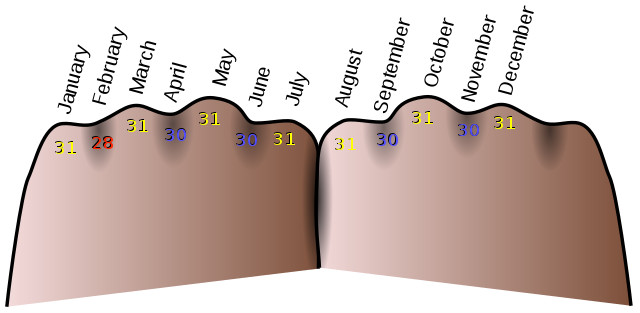
In the 1890s, traveler Henry Attwell found that the residents of rural Holland used their hands to recall which months of the year have 31 days:
The knuckles of the hand represent months of thirty-one days, and the spaces between represent months of thirty days. Thus, the first knuckle is January (thirty-one), the first space February (twenty-eight or twenty-nine, the exception), the second knuckle March (thirty-one), the second space April (thirty), &c. The fourth knuckle, July (thirty-one), is followed by the first [of the other hand], August [thirty-one], and so on, until the third knuckle is reached a second time. This sequence of two knuckles corresponds with the only sequence of months (July and August) which have each thirty-one days.
“This memoria tecnica certainly gives a more ready result than the rhyme [‘Thirty Days Hath September’].”
(From Angus Trumble, The Finger: A Handbook, 2010.)
